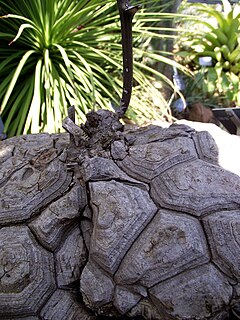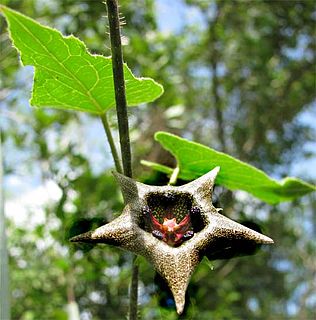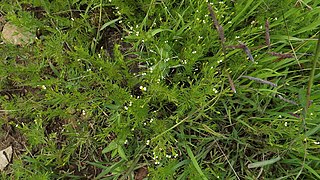
Milla, the Mexican star, is a genus of monocotyledonous plants in the family Asparagaceae, subfamily Brodiaeoideae. They are native mostly to Mexico, with one species extending into Guatemala, Honduras, Arizona, Texas and New Mexico.

Tigridia, the peacock flowers, tiger-flowers or shell flowers, is a genus of bulbous or cormous plants, belonging to the family Iridaceae. They have large showy flowers and one species, Tigridia pavonia, is often cultivated for this. The approximately thirty five species in this family grow in the Western Hemisphere, from Mexico to Chile. The tigridia flower is short lived, each often blooming for only one day, but often several flowers will bloom from the same stalk. Usually they are dormant during the winter dry-season. Its roots are edible and were eaten by the Aztecs of Mexico who called it cacomitl and its flower ocēlōxōchitl "Jaguar flower". The genus name means "tiger-like" and alludes to the coloration and spotting of the flowers of the type species Tigridia pavonia.

Hypoxis decumbens is a species of plant in the Hypoxidaceae, considered by some authors to be included within the Liliaceae or Amaryllidaceae. The species is widespread across South America, Central America, Mexico, and the West Indies.

Dalechampia dioscoreifolia is a species of plant in the family Euphorbiaceae first described in 1841. It is native to Central America and northern and western South America.

Dioscorea mexicana, Mexican yam or cabeza de negro is a species of yam in the genus Dioscorea.

Dicranopygium is a genus of plants belonging to the family Cyclanthaceae, first described as a genus in 1954. They are distributed in the Neotropical realm from southern Mexico to Peru.

Brunellia is a genus of trees. They are distributed in the mountainous regions of southern Mexico, Central America, West Indies, and South America. Brunellia is the only genus in the family Brunelliaceae. As of 2001 there were about 54 species.

Stenospermation is a genus of plant in family Araceae native to South America and Central America.

Stromanthe is a genus of flowering plants in the family Marantaceae, native to the tropical portions of the Americas from Mexico to Trinidad to northern Argentina.

Teuscheria is a genus of orchids native to southern Mexico, Central America and northern South America. The genus is named for Henry Teuscher, an award-winning landscape artist and horticulturalist.

Bixa is a genus of plants in the family Bixaceae. It is native to Mexico, Central America, Caribbean, and South America, and naturalized in other places.

Pitcairnia atrorubens is a species of flowering plant in Bromeliaceae family. It is native to Costa Rica, Panama, Honduras, Guatemala, Colombia, and western Mexico as far north as Nayarit.

Sarcoglottis is a genus of flowering plants from the orchid family, Orchidaceae. It is widespread across much of Latin America from Mexico to Argentina, with one species extending northward into Trinidad and the Windward Islands.
Trixis inula, the tropical threefold, is a plant species native to Texas, Mexico, Central America, northern South America, and the West Indies. It is found on open, sandy sites such as roadsides, thorn scrub, thickets, etc.
Peltastes is a genus of flowering plants in the family Apocynaceae, first described as a genus in 1932. It is native to Central and South America.
Macroscepis is a genus of plants in the family Apocynaceae, first described as a genus in 1819. It is native to Latin America and the West Indies.

Dictyanthus is a genus of plant in family Apocynaceae, first described as a genus in 1844. It is native to Mexico and Central America

Dimerocostus is a group of plants in the Costaceae described as a genus in 1891. It is native to Central and South America.
Brickellia glandulosa is a Mesoamerican species of flowering plants in the daisy family. It is widespread from San Luis Potosí south to Nicaragua.

Tagetes filifolia is a New World species of marigolds in the sunflower family. It is widespread across much of Latin America from northern Mexico to Argentina. Common name is Irish lace despite the fact that the plant does not grow in Ireland.















